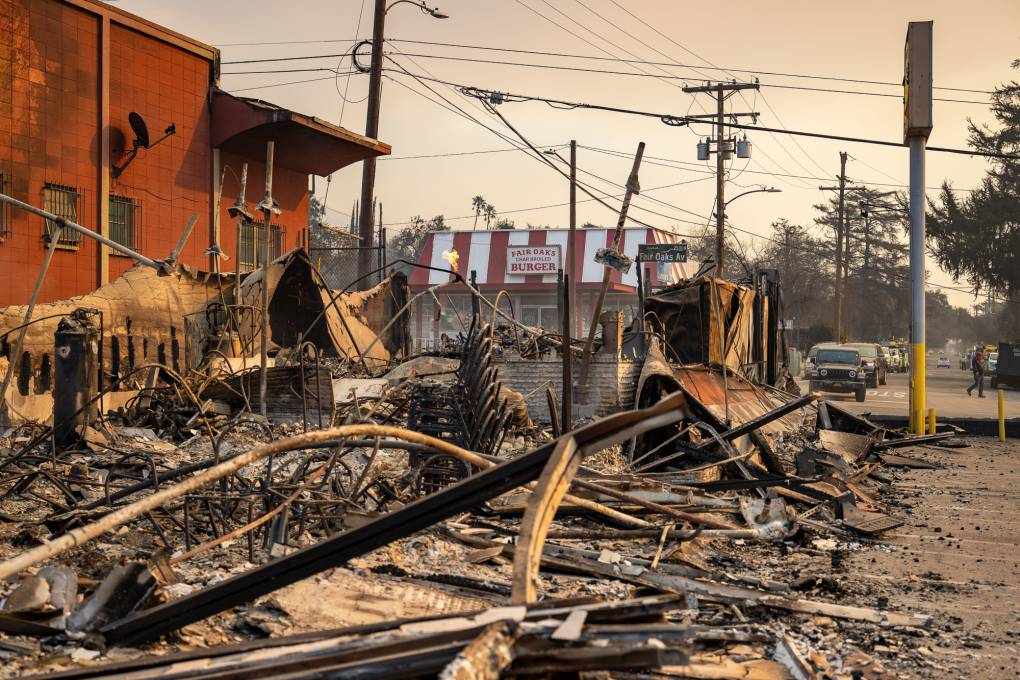Ohio Derailment Aftermath: Persistent Toxic Chemical Contamination In Buildings

Table of Contents
Types of Toxic Chemicals and Their Persistence
The derailment released a cocktail of toxic chemicals, most notably vinyl chloride and butyl acrylate. Understanding the properties of these chemicals is crucial to comprehending the persistent nature of the contamination. Vinyl chloride, a known carcinogen, is a volatile organic compound (VOC) that readily evaporates into the air. However, it can also condense on surfaces and potentially seep into porous materials. Butyl acrylate, another VOC, is less volatile but can still persist in building materials like wood, drywall, and insulation, leading to long-term exposure risks.
- Vinyl chloride's potential for long-term health effects: Exposure to vinyl chloride can increase the risk of various cancers, including liver cancer, brain cancer, and lung cancer. Long-term, low-level exposure can also lead to liver damage and other health complications.
- Butyl acrylate's persistence in porous materials: Butyl acrylate's ability to penetrate and bind to porous building materials means that simple cleaning may not be sufficient to eliminate the contamination. This necessitates more extensive and costly remediation strategies.
- The challenges of detecting and removing these chemicals from various building materials: Identifying and quantifying the extent of contamination in diverse building materials requires sophisticated testing methods. Removal often involves specialized techniques that may vary depending on the material and the type of chemical present.
- Potential for long-term exposure risks within homes and businesses: Residents and workers in affected buildings may face ongoing exposure to these chemicals through inhalation, skin contact, or ingestion, potentially leading to chronic health problems.
Impact on Building Inhabitants and the Environment
The impact of this persistent toxic chemical contamination extends beyond immediate health concerns. Exposure to vinyl chloride and butyl acrylate can lead to a range of immediate and long-term health problems. Respiratory issues, including coughing, shortness of breath, and wheezing, are common. More serious long-term effects include various cancers and other chronic illnesses. The environmental consequences are equally concerning. Soil and water contamination can have devastating effects on local ecosystems, harming wildlife and potentially contaminating drinking water sources.
- Reported health problems among residents: Numerous residents near the derailment site have reported experiencing a wide range of health issues, ranging from respiratory problems to skin irritations and headaches.
- The need for comprehensive health screenings in affected areas: Thorough health screenings are essential to assess the extent of the health impact and provide appropriate medical care to affected individuals. Long-term monitoring is crucial to track the development of any health problems.
- Contamination of local water supplies and its effects: The potential contamination of water supplies raises serious concerns about the long-term health and well-being of the community. Regular water testing and treatment are essential to ensure the safety of the drinking water.
- Long-term environmental impact on local ecosystems: The contamination of soil and water can have long-lasting consequences for the local environment, affecting plant and animal life and potentially disrupting the delicate balance of the ecosystem.
Challenges in Cleaning and Remediation
Cleaning up the persistent toxic chemical contamination presents significant logistical and technical challenges. The complexity arises from the varied nature of the affected buildings and the different properties of the chemicals involved. Different remediation techniques are needed for different materials, and the process can be time-consuming and costly. Furthermore, accessing all affected buildings and properties might be challenging, potentially hindering the efficacy of the cleanup efforts.
- Difficulties in accessing and cleaning all affected buildings: The sheer number of potentially affected buildings and the varying degrees of contamination make it a complex undertaking to ensure thorough cleaning.
- The cost of professional decontamination services: Effective remediation requires specialized expertise and equipment, leading to substantial costs for decontamination services. This poses a financial burden on residents and potentially limits access to necessary cleanup.
- Lack of readily available resources and expertise: The scale of the contamination may exceed the available resources and expertise in the region, creating further delays in the cleanup process.
- Need for improved regulatory frameworks for chemical transport and response: The incident highlights the critical need for improved regulations and emergency response protocols for the transportation and handling of hazardous chemicals.
Government Response and Community Action
The government's response to the derailment and the subsequent toxic chemical contamination has been met with criticism from residents and advocacy groups. Concerns have been raised regarding the transparency of information provided to the public and the effectiveness of government cleanup efforts. In response, community members have organized protests, demanded accountability from responsible parties, and launched legal actions to seek compensation for damages and ensure thorough remediation.
- Effectiveness of government cleanup efforts: The speed and effectiveness of the government's cleanup efforts have been questioned, with residents expressing concerns about the adequacy of the measures taken.
- Transparency of information provided to the public: Lack of clear and timely communication from authorities has fueled distrust and anxiety among affected residents.
- Community organizing and advocacy for cleanup and compensation: Community members have actively organized and advocated for comprehensive cleanup efforts and fair compensation for damages incurred.
- Legal action taken by affected residents: Several residents have initiated legal proceedings against the responsible parties, seeking redress for health problems and property damage caused by the contamination.
Conclusion
The Ohio train derailment has left a devastating legacy of persistent toxic chemical contamination in buildings, posing significant and long-lasting risks to human health and the environment. The challenges inherent in cleaning up and remediating this contamination underscore the urgent need for enhanced safety regulations, improved emergency response protocols, transparent communication, and comprehensive support for affected communities. Long-term monitoring of the affected areas, coupled with regular health assessments of residents, is paramount to mitigate the long-term consequences of this disastrous event. To ensure the safety and well-being of those affected and prevent similar incidents in the future, continued vigilance, rigorous environmental monitoring, and transparent communication about persistent toxic chemical contamination are absolutely vital. Demand accountability from responsible parties and support initiatives aimed at the complete remediation of Ohio’s toxic chemical contamination.

Featured Posts
-
 Butlers Strong Performance Propels Golden State Warriors Past Houston Rockets
May 16, 2025
Butlers Strong Performance Propels Golden State Warriors Past Houston Rockets
May 16, 2025 -
 La Liga Hyper Motion Almeria Contra Eldense En Directo Online
May 16, 2025
La Liga Hyper Motion Almeria Contra Eldense En Directo Online
May 16, 2025 -
 Price Gouging Following La Fires A Selling Sunset Star Speaks Out
May 16, 2025
Price Gouging Following La Fires A Selling Sunset Star Speaks Out
May 16, 2025 -
 San Diego Padres Vs New York Yankees Prediction And Betting Preview
May 16, 2025
San Diego Padres Vs New York Yankees Prediction And Betting Preview
May 16, 2025 -
 Johnstons Record Setting Goal Propels Stars To Game 4 Win Against Avalanche
May 16, 2025
Johnstons Record Setting Goal Propels Stars To Game 4 Win Against Avalanche
May 16, 2025
